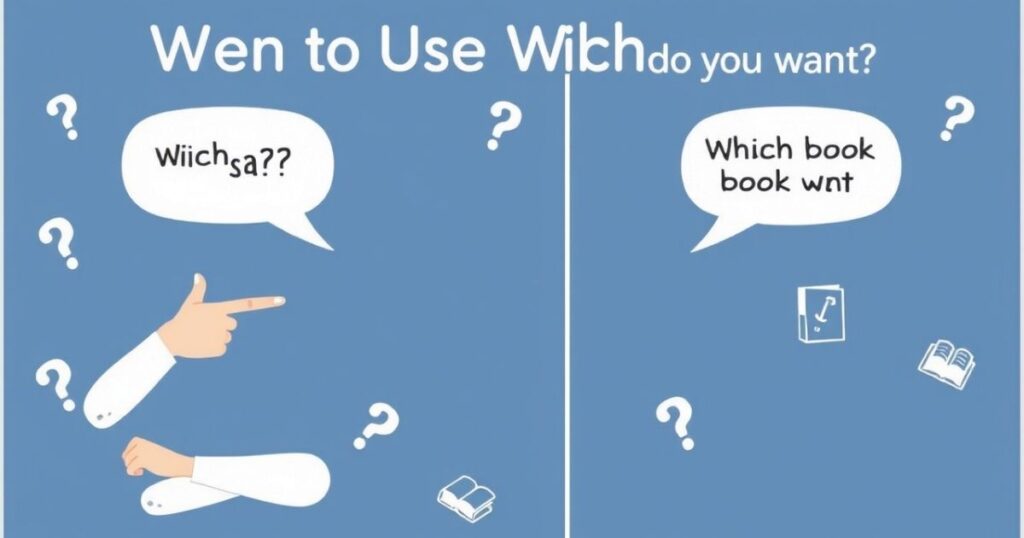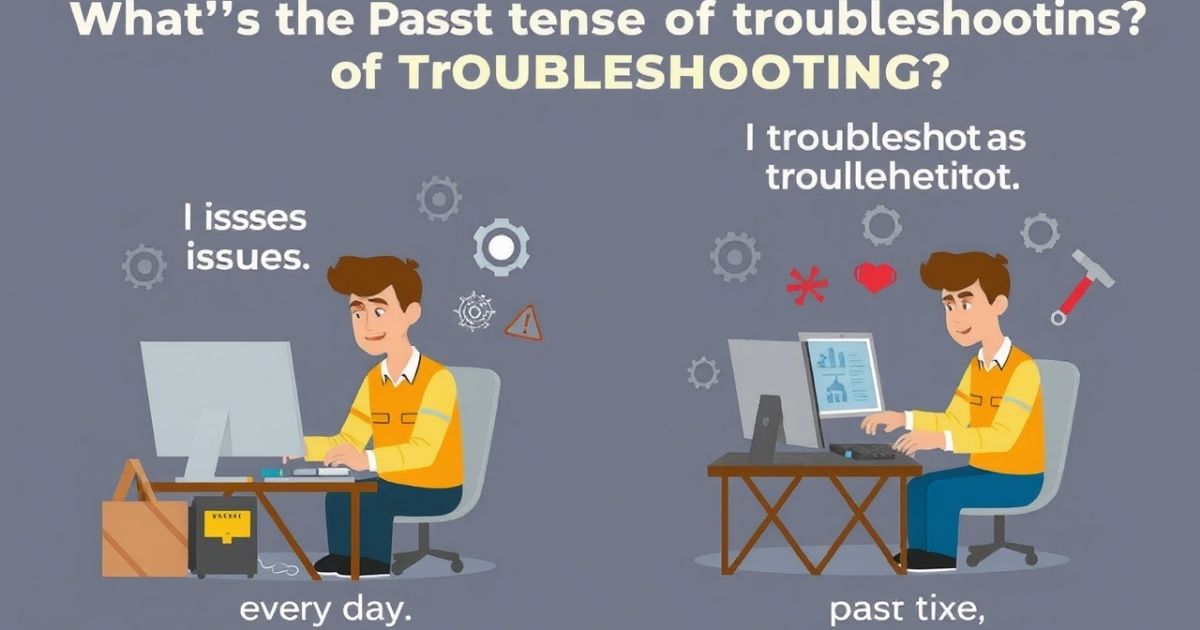When it comes to solving problems, especially in the tech world, the verb “troubleshoot” is commonly used. However, many people find themselves wondering, what’s the past tense of troubleshooting? Whether you’re writing or speaking, it’s essential to know how to use this verb correctly in different contexts. The past tense of “troubleshoot” is not as tricky as it may seem, but understanding its usage will improve your communication.
So, what’s the past tense of troubleshooting? In most cases, the correct form is “troubleshooted,” and it describes actions that have been completed in the past. Knowing when and how to use “troubleshoot” versus “troubleshooting” is important for telling clear, effective stories about problem-solving, so let’s dive into this common question once and for all, what’s the past tense of troubleshooting?
In the Present: Troubleshooting Today

In today’s fast-paced world, troubleshooting is a common action that many of us perform regularly. When you’re in the thick of solving problems, you are actively figuring things out, whether it’s computer issues, device malfunctions, or something more complex. “Troubleshoot” is the verb you use when describing the action of solving a problem in the present. For example, when you say, “I troubleshoot computer issues every day,” you’re talking about something that is happening now, in the present.
When we troubleshoot today, we are actively involved in the process of solving problems right now. This could be something as simple as fixing a slow network connection or debugging an app that’s not functioning properly. No matter the problem, you are in action, figuring out solutions. You could say, “I troubleshoot new devices everyday,” to show that you are consistently engaged in this process. The present tense of the verb reflects the ongoing effort, helping you convey that you are actively solving issues in the here and now.
Examples:
| Subject | Present Action |
| I | I troubleshoot devices in real-time. |
| She | She troubleshoots login issues for users. |
| We | We troubleshoot printing problems. |
| You | You troubleshoot bugs in the mobile app. |
| They | They troubleshoot database errors. |
In the Past: The Journey of “Troubleshooted”
Now, let’s rewind the clock and look at how to express troubleshooting actions that have already happened. The past tense of troubleshooting is “troubleshooting.” You use this form when you’re talking about something you successfully did in the past, such as solving a tricky software glitch. For example, “Last week, I troubleshooted a network issue,” clearly shows that the action happened in the past and was completed.
The journey of troubleshooting is all about looking back at the problems you’ve solved. Whether it’s reminiscing about fixing a bug in the system or resolving a malfunctioning device, troubleshooted is how you express those problem-solving adventures. In the past, the act of troubleshooting was a completed process, one that led to a solution. So when you say, “I troubleshooted a tricky problem last month,” you’re reflecting on an adventure where you successfully sorted out an issue.
Read this Also: The Past Tense of Meet: Picking the Right Verb
Present vs. Past: Quick Recap
To make things clear, let’s quickly recap how to distinguish between the present and the past when using “troubleshooting.” The present tense, “troubleshoot,” is for actions you are doing now. When you are solving a problem in real time, you use “troubleshooting.” For example, “I troubleshoot issues every day at work.” You are in the midst of action, and the problem isn’t resolved yet.
On the other hand, the past tense, “troubleshooted,” is used when talking about actions that have already been completed. For instance, “Yesterday, I troubleshooted a software issue,” shows that the action took place in the past and is now finished. The key difference is that the present is for what’s happening now and the past is for stories of what’s already been done. So, if you’ve sorted out an issue, you would say you troubleshooted it, not that you are troubleshooting it now.
| Present Tense | Past Tense |
| I troubleshoot new devices. | I troubleshooted the network issue. |
| She troubleshoots minor errors. | She troubleshooted a malfunction last week. |
| They troubleshoot website bugs. | They troubleshooted the glitch yesterday. |
| We troubleshoot apps regularly. | We troubleshooted a login error last month. |
| You troubleshoot customer problems. | You troubleshooted a slow app issue. |
When to Use Which

Knowing when to use troubleshoot versus troubleshooting can help you speak and write more clearly. Troubleshoot is for current actions, and you use it when you’re talking about solving problems in the present. Whether you’re at work, at home, or working on a personal project, if you’re actively working through a problem, “troubleshoot” is the word to use. For example, “They troubleshoot technical issues daily.”
On the other hand, troubleshooting is used when you’re talking about past actions. If you’ve already dealt with an issue, knowing which word to use helps keep your stories and experiences clear. For example, you might say, “Last month, I troubleshooted a problem with my email connection,” to describe an event that has already happened. Keeping this distinction in mind will ensure that you’re always using the right form of the verb in the right context.
Examples:
- In this role, I troubleshoot issues daily.
- During the event, we troubleshooted connectivity glitches.
- She troubleshoots errors for all team members.
- On that project, they troubleshooted system crashes.
- He troubleshoots bugs while testing features.
Mastering the Verb Conundrum

Mastering the past tense of “troubleshoot” can help you improve your communication and give you more finesse when telling your stories. While English has many irregular verbs, understanding how to use “troubleshooted” correctly is one of the ways to refine your language skills. It’s all about knowing when to use each verb form to make your message clear.
Think of verbs like tools in a toolbox. When you master these tools, you can better handle all kinds of communication challenges. So, whether you’re talking about solving issues in the present or recounting past problem-solving adventures, knowing how to use the correct verb form helps make your speech and writing more effective and engaging. Understanding these small nuances is a step toward becoming a more confident communicator.
Wrapping Up the Time Travel
So, what’s the past tense of troubleshooting? It’s “troubleshooted,” and now you understand how to use it correctly! Whether you’re diving into solutions now or reminiscing about problems you’ve troubleshooted in the past, this small tweak in verb tense makes your communication more effective. The next time you talk about fixing a problem, you’ll know whether to say you are troubleshooting it or if you’ve already troubleshooted it. Understanding these verb tricks makes your language skills stronger and helps you tell your problem-solving stories in a clear and concise way.
In summary, don’t let verb tenses get in the way of your communication. With a little practice, using the past tense of “troubleshoot” , “troubleshooted” , will become second nature. So, whether you’re working through a problem today or looking back on the solutions you’ve already found, mastering these small details can make a big difference in how effectively you communicate. Now, you can go ahead and tackle your next issue with confidence, knowing exactly how to use the verb forms to describe it!
Conclusion
” What’s the past tense of troubleshooting?” is a question many people ask. The answer is simple: it’s “troubleshooted.” Understanding this verb tense is important for speaking and writing clearly. Whether you’re solving problems now or talking about ones you’ve solved before, knowing when to use “troubleshoot” and “troubleshooted” makes your communication better.
So, next time you’re faced with a problem, you’ll know exactly how to talk about it. When you’re fixing an issue today, you troubleshoot. When you’re reflecting on past solutions, you troubleshoot. Remember, ” what’s the past tense of troubleshooting?” means it’s time to use “troubleshooted” when talking about your past problem-solving adventures. Keep practicing, and you’ll master it in no time!

Gramcoachpro is your go-to platform for mastering grammar, writing, and communication skills. If you’re a student, teacher, or content creator, we provide easy-to-understand tips, examples, and tools to improve your language — fast and effectively. Our mission is to make better writing simple and accessible for everyone.

